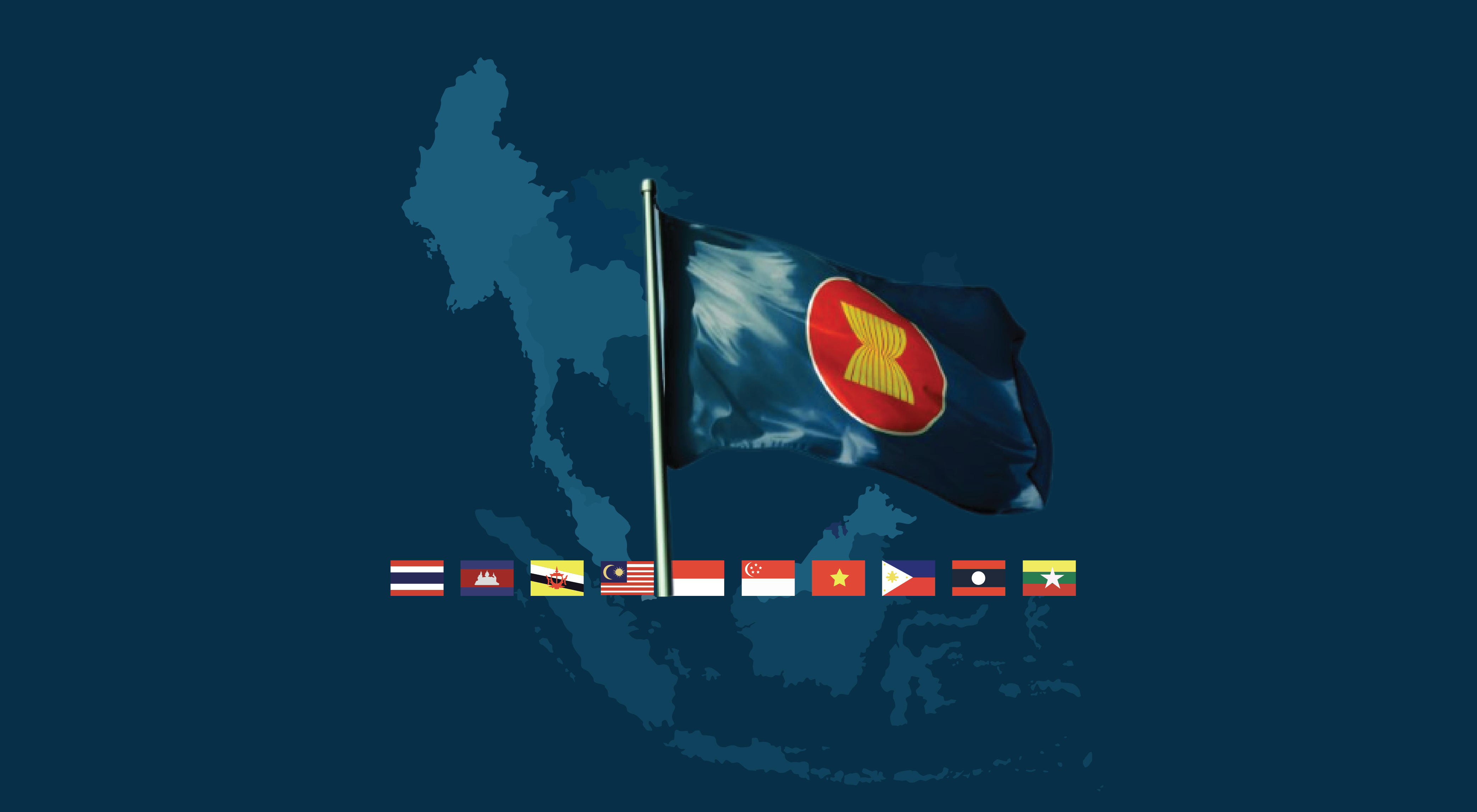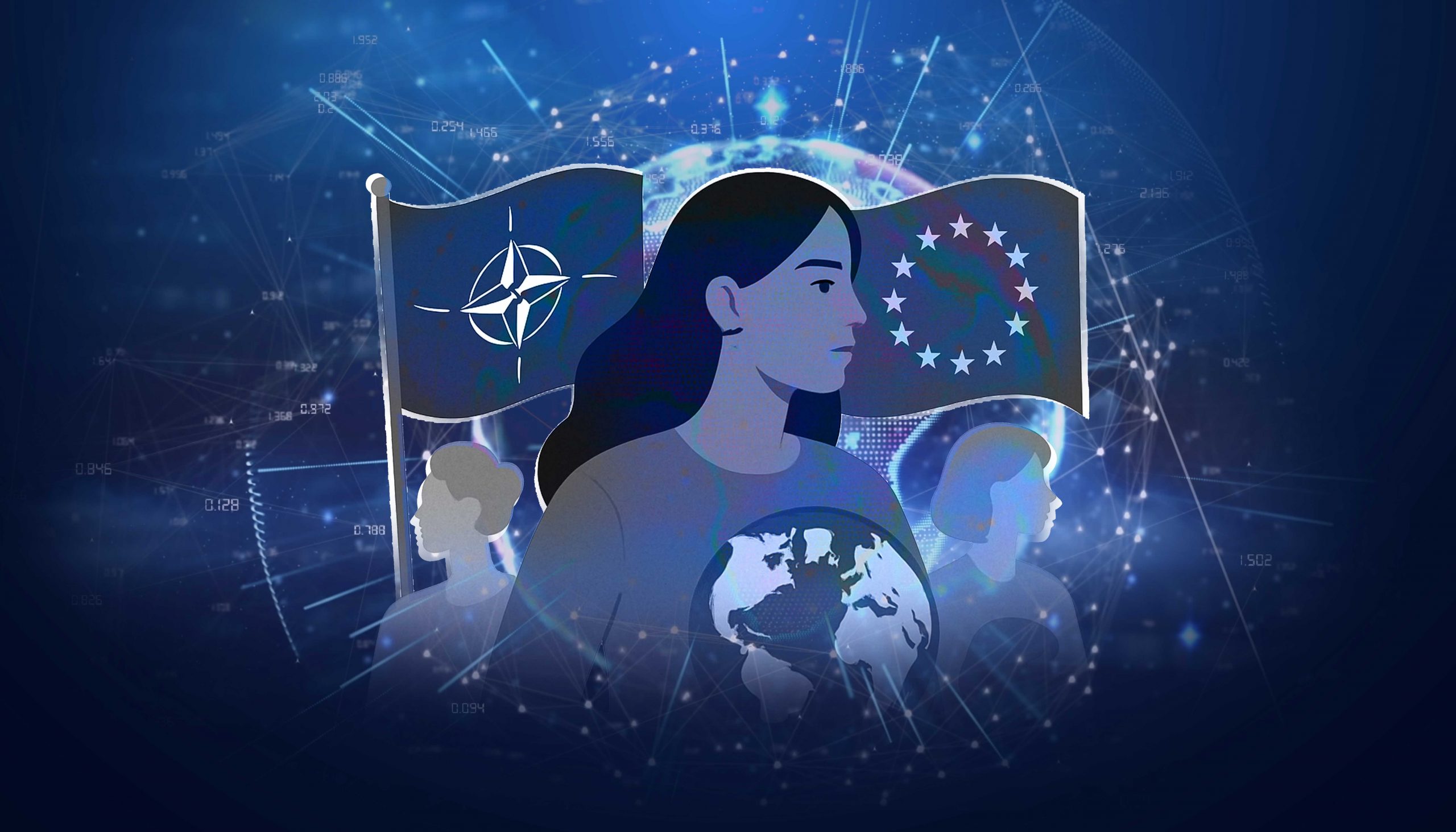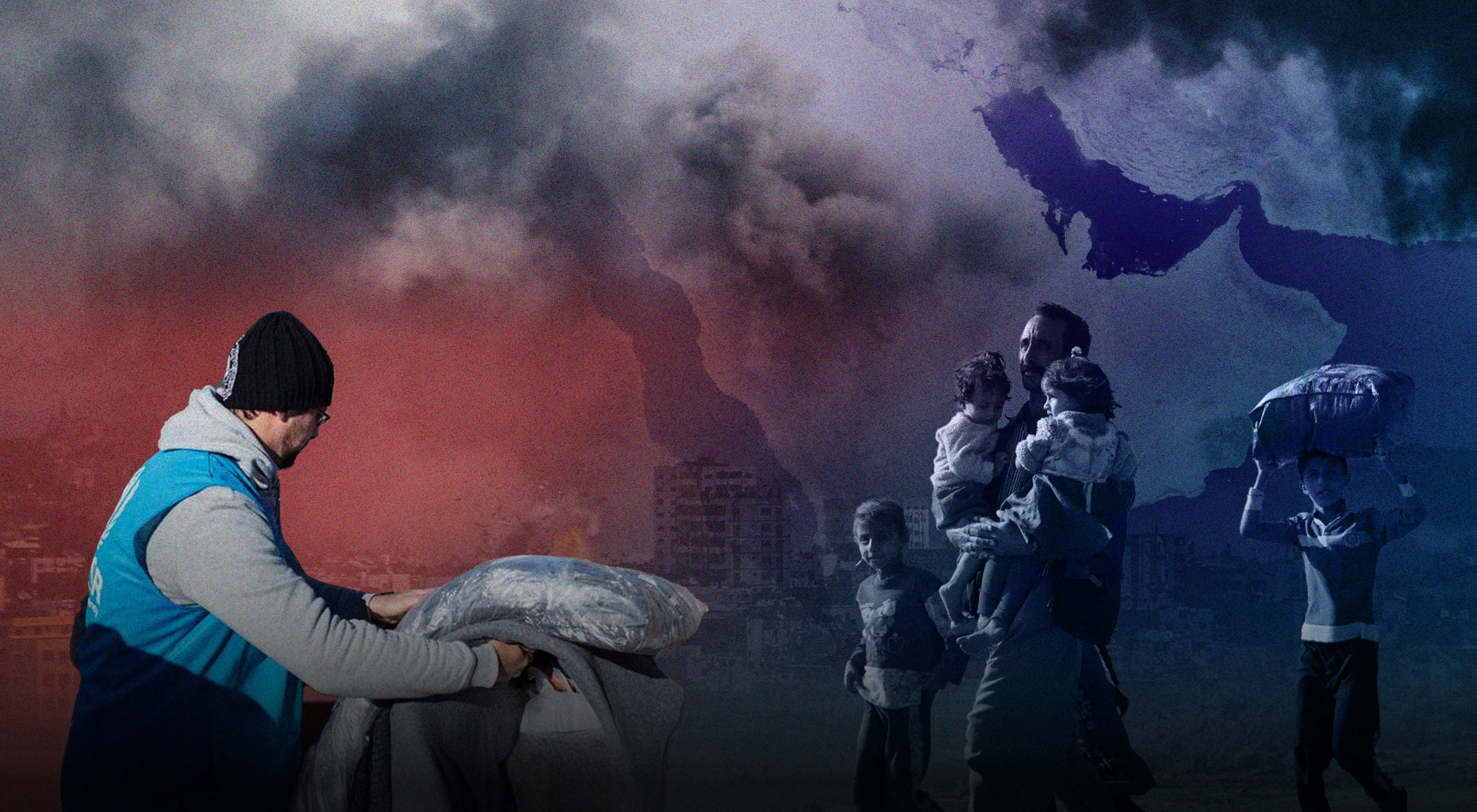ASEAN is commonly recognized as the most successful regional intergovernmental organization involving ten Southeast Asian countries that are signatories to the 1967 Bangkok Declaration, also known as the ASEAN Declaration. The Bangkok Declaration’s main goal was to set up mechanisms for high-level diplomatic meetings (i.e. with the participation of heads of state, foreign ministers, and their staffers). From these elite meetings, ASEAN started to grow as a political entity. Even though the diplomatic negotiations that led to the establishment of ASEAN were dubbed “sports-shirt diplomacy,” [1] ASEAN is the culmination of a difficult diplomatic process. It can be defined as a “collection of diverse political regimes.” [2] Even now, it cannot be considered as a finished product but rather a constant work in progress, an evolving reality.
As a matter of fact, initially, ASEAN was thought to be an instrument of international relations to promote trust and peace among countries that had been involved in several military confrontations, which put at risk the lives of millions of people. The 1967 Bangkok Declaration created a special momentum for the creation of ASEAN as such, and is somehow a preparatory work of the 2007 ASEAN Charter. All in all, 1967 marked the establishment of a cooperation mechanism. Thus, it was fundamental to create the idea of a community of nations that could develop in a more pragmatic way, by creating functional cooperation among its member states. For all the reasons stated above, it is possible to conclude that “ASEAN was famous for its informality and its culture of mutual accommodation and consensus-making.” [3] Time has proven that ASEAN was and continues to be capable of making significant contributions to the region’s political development, economic growth, and socio-cultural progress, among other things.

A concern surfaced at one point when Member States recognized that there was an issue with the way ASEAN evolved. In particular, it was noted that there was a lack of formal structure. Consequently, the assertion that ASEAN was quite strong in networks but weak in institutions [4] is objectively true. It was in the first decade of the 21st century that ASEAN felt the need to create a stronger and more stable institutional framework based on cooperation, with a view to becoming a community able to better manage new challenges and global threats in several fields (e.g., environmental protection, human security). Of note is that, since its inception, the ASEAN Way did not aim to create a “central bureaucratic system or a supranational organization” [5] like the European Union, but rather the goal was to base decision-making processes on consultation and consensus as well as on the principle of non-interference in members’ internal affairs. In doing so, the ASEAN Way initially served three main functions, namely: (i) to alleviate intra-ASEAN tensions; (ii) to reduce the regional influence of external actors; and (iii) to promote the socio-economic development of its members.
Within this perspective, it could be said that the ASEAN Charter is a revolutionary document as it has created a paradigm shift in the nature of ASEAN. This organization is now considered a political association with a legal identity, aimed at uniting member states in the face of global challenges. In 2007, the ASEAN Charter conferred legal personality on ASEAN. Article 3 of the ASEAN Charter expressly states the following: “ASEAN, as an inter-governmental organization, is hereby conferred legal personality.” Subsequently, in 2011, the Rules of Procedure for Conclusion of International Agreements by ASEAN were established.
By putting emphasis on regional institution building, accountability, and compliance, the ASEAN Charter focuses on setting objectives and codifying norms, rules, and values, such as the rule of law (mentioned in the Preamble) and reliance on constitutional government. [6] Pursuant to the commitment to the rule of law, Article 1(7) clearly states that one of the main purposes of ASEAN is “to strengthen democracy, enhance good governance and the rule of law, and to promote and protect human rights and fundamental freedoms, with due regard to the rights and responsibilities of the Member States of ASEAN.” [7] Professor Simon Chesterman emphasizes that when it comes to the rule of law, it needs to be put in the context of different “times and geography.” [8] It implies no arbitrary use of powers, the supremacy of the law, and equal protection of all. It is interesting to highlight the legal opinion made by the former president of the International Court of Justice, Rosalyn Higgins, who outlined a definition of the rule of law in the context of international law. She states: “How then … should an ‘international rule of law’ look? First, there should be an executive reflecting popular choice, taking non-arbitrary decisions applicable to all, for the most part judicially-reviewable for constitutionality, laws known to all, applied equally to all, and independent courts to resolve legal disputes and to hold accountable violations of criminal law, itself applying the governing legal rules in a consistent manner.” [9] Thus, by adopting the Charter, ASEAN has based its decision-making process and actions, as well as the implementation of procedures, on rules commonly established by the Member States.
At the ASEAN regional level, the principle of the rule of law largely contributes to (i) the promotion of human rights; (ii) adherence to international law and international humanitarian law; and (iii) the creation of economic prosperity and growth. Article 2(2) of the Charter also makes reference to the rule of law by reaffirming adherence to the principles of the UN Charter, as well as commitment to the promotion of human rights and social justice. Of note is that, in a future perspective, ASEAN and other intergovernmental organizations might consider adopting certain instruments of the Global Rule of Law, such as the Global Administrative Law, that could have significant legal implications for individuals, without any intervention by national governments. However, implementing such a project now would be challenging not only at the ASEAN regional level but also globally. Global Administrative Law is a relatively new concept; thus, it will take time to establish well-grounded theoretical principles.
ASEAN is seeking to improve compliance with the rule of law by member states. However, it is widely recognized, within the ASEAN epistemic community and among officials, that the organization is skillful at making declarations, agreements, and statements, but not good at fulfilling, or willing to follow through with, its commitments. The ASEAN Secretary-General has often pointed out that there is a lack of commitment to the implementation of agreements with concrete actions; it was noted that “only 30% of ASEAN agreements were implemented.” [10] Unfortunately, the explicit statement that the “ASEAN was prolific in making decisions and agreements but weak on compliance” is true for two major reasons.
Firstly, there is a tendency to use soft law [11], or non-legally binding instruments (e.g., the 2011 Joint Declaration on Comprehensive Partnership with the UN and the 2012 MoU with the Asian Development Bank), over hard law (e.g., treaties, conventions, charters). This somehow leads to weaker cooperation and wider non-compliance issues. Conversely, if Member States had started adopting hard laws instead, the result would have been a stronger system of cooperation and a higher level of compliance. ASEAN has preferred to use soft law instruments like guidelines, codes of conduct, and blueprints, for the following reasons: (i) to have a high degree of flexibility; (ii) to facilitate compromise, especially when state interests are at stake; (iii) to protect the sovereignty of Member States; and (iv) to have the option to transform a particular soft law instrument into hard law. It is possible to talk about the hardening of soft law with reference to the Implementation of Human Rights Due Diligence Requirements in Domestic Legislation. The softening of hard law is also an existing phenomenon. It should be noted that hard law instruments have been used within the legal and political context of the ASEAN Economic Community – such as the ASEAN Framework Agreement on Services concluded in 1995 and the Protocols to implement various packages or to amend the Framework Agreement. [12] The use of hard law would make the organization more credible and reduce the number of issues that come up because of non-compliance.
Second, the lack of dispute resolution mechanisms is often cited as a cause of non-compliance. Since its creation, ASEAN has settled its disputes by means of consultation and negotiations. Due to a number of negative factors – including ambiguity, lack of capacity, lack of faith in the system, low levels of legalization and institutionalization, lack of information, and a weak rule of law at the national and regional levels – diplomacy has been the primary means of resolving controversies among Member States. There is a particular need for a binding dispute settlement mechanism in the economic sector, especially with reference to trade.
Before the elaboration of the Charter, a report by the Eminent Persons Group (EPG) [13] strongly recommended that ASEAN formalize a dispute settlement mechanism to move forward in establishing a rules-based community. Once again, the revolutionary character of the ASEAN Charter can be underlined, as it set up dispute settlement and compliance monitoring mechanisms. Chapter VIII of the Charter, in particular, outlines the legal provisions. Pursuant to the ASEAN spirit of friendship and cooperation, Article 22(1) establishes the general principles of dispute settlement by inviting Member States to “resolve peacefully all disputes in a timely manner through dialogue, consultation, and negotiation.” [14] A little-known fact is that a Member State can ask the Chairman or the Secretary-General of ASEAN “to provide good offices, conciliation, or mediation.” [15] Similar to the EPG report, the Secretary-General of ASEAN, with the assistance of other ASEAN bodies, carries out monitoring activities on the compliance of Member States and keeps the ASEAN Summit informed through the submission of a report. [16]
According to Article 24(3), interpretation-related disputes concerning ASEAN economic agreements will be resolved according to the rules contained in the ASEAN Protocol on Enhanced Dispute Settlement Mechanism. Interpretation-related disputes regarding other aspects of ASEAN cooperation fall under the legal framework of the Treaty of Amity and Cooperation in Southeast Asia (Article 24(2)). Importantly, the ASEAN Summit, within the dispute settlement mechanism set out in the ASEAN Charter, is tasked with inter alia (i) finding peaceful solutions to unresolved disputes [17] and (ii) looking into issues arising from Member States’ non-compliance. The critic may say that these dispute settlement mechanisms are not adequate. However, based on a review process, it would be possible to improve their effectiveness within the next few years. It is noteworthy that there was no consensus on the proposal by the EPG to set up an ASEAN Court similar to the European Court of Justice. The aim of the EPG was to minimize non-compliance with the adoption of two different legal techniques: (i) compulsory dispute settlement mechanisms characterized by the presence of punitive sanctions and coercive measures; and (ii) “management mechanisms” through an interactive discourse involving persuasion and reputation in the international order. [18]
Another distinctive element of the ASEAN Charter is that it led to the establishment of a regional human rights body. In particular, Article 14 states: “In conformity with the purposes and principles of the ASEAN Charter relating to the promotion and protection of human rights and fundamental freedoms, ASEAN shall establish an ASEAN human rights body.” [19] This legal provision was effectively groundbreaking as it paved the way for the creation of two distinct human rights bodies, namely the ASEAN Intergovernmental Commission on Human Rights and the ASEAN Commission on the Rights of Women and Children. By means of these legal instruments, ASEAN can, among other things, help tackle human rights violations (e.g., human trafficking) and conduct thematic studies to aid policy development with a view to creating a regional human rights mechanism. In particular, ASEAN must be brave in taking a position with regards to the recent crisis, namely the Rohingya crisis in Myanmar [20]. Failure to do so could impact regional security and the unity of ASEAN itself. Based on the 1976 Treaty of Amity and Cooperation in Southeast Asia, ASEAN is expected to give a collective response to any crisis that arises in the region. ASEAN should boost its community by creating a political framework characterized by enhanced interaction to better deal with crises. In some ways, a more advanced and innovative form of constructive engagement or flexible engagement approach could be adopted to solve the Rohingya crisis.
The Charter also pays special attention to environmental protection. According to Article 1(9), one of the primary purposes of ASEAN is to “promote sustainable development to ensure the protection of the region’s environment, the sustainability of its natural resources, the preservation of its cultural heritage, and the high quality of life of its people.” [21] This is a remarkable provision because it augments the green awareness in ASEAN. In the past, ASEAN was criticized because of its ambiguous political will in establishing “a just and equitable environmental order” [22] and in implementing the ASEAN Agreement on Transboundary Haze Pollution. As Simon Tay has noted: “If this agreement is not effectively implemented, this will reflect badly on ASEAN. The question of credibility for Indonesia and ASEAN goes beyond environmental issues. Questions will arise about both the economic integration and dynamism of the region and the prospects for building a community of peace and security.” [23]
Broadly speaking, although it is possible to talk about a clash of systems between pre-Charter ASEAN (1967-2006) and post-Charter ASEAN (2007-present), a positive and constructive path has been taken by the Member States to strengthen and enhance ASEAN regional institutions. The Charter provides the ASEAN regional organization with a substantial foundation, international legal personality, and a credible institutional framework.
Gradually, the Charter has made a significant contribution to the institutionalization of ASEAN, enhancing its role and credibility. ASEAN has strengthened its foundation through the formation of the Coordinating Council, Community Councils, Sectoral Ministerial Bodies, National Secretariats, and Committee of Permanent Representatives. It is crucial to point out that ASEAN is not a supranational organization where Member States share sovereignty – like the European Union, for example. This highlights ASEAN’s choice not to have a centralized, permanent bureaucratic system.
The ASEAN Economic Community (AEC), one of the pillars of Bali Concord II, was created in 2015 to move the organization towards deeper economic integration. ASEAN wants broader and more inclusive economic development for all the member states. As noted by Pelkmans, the AEC vision declared in Bali was a “breakthrough towards a technical cooperation.” [24] The ASEAN Vision 2020 states that “AEC is the realization of the region’s end-goal of economic integration” for the creation of “a stable, prosperous and highly competitive economic region” in which there is a “free flow of goods, services, investment and a freer flow of capital, equitable economic development and reduced poverty and socioeconomic disparities.” [25] It is essential to underline that the ASEAN Secretariat suggested changes to the modalities or modus operandi. The ultimate intention is to create a single market and ASEAN production base for the future. Within these purposes, it is worth considering the characteristics of the region. ASEAN has the potential to be more dynamic and more robust in the global market. However, the creation of a single market and ASEAN production base is a very ambitious goal.
AEC has a flexible concept of economic integration. Yet, it must be stressed that creating a single market requires harmonization of laws, principles, and standards, as well as more substantial capacity building in the weaker local states. As a first priority, ASEAN member states must implement the pragmatic recommendations of the High-Level Task Force on ASEAN Economic Integration (HLTF). Although it is true that ASEAN has facilitated investments and introduced liberalized policies in some significant economic sectors – such as wood-based products, electronics, automotive and financial services – institutional reform is critically needed. ASEAN as a whole must abandon the crippling principle of non-interference and non-intervention. In other words, ASEAN must face its fear of commitment. The ASEAN Way provides Member States with great flexibility in terms of carrying out duties and obligations. This is of great concern to international investors due to the uncertainty in the legal and political landscape. In this regard, significant could be the establishment of Dispute Settlement Mechanisms (DSMs), which could provide some form of assurance in terms of compliance and commitment to obligations. Effective systems must be created to ensure the implementation of all economic agreements, with DSMs following the model of the EU SOLVIT system. It is noteworthy that the HLTF recommended the adoption of the World Trade Organization Dispute Settlement Mechanism.
The focus of AEC is to create stable external and intra-ASEAN trade relations, reduce fragmentation, and foster equitable economic development. A higher level of competitiveness in the economy is one of the main components. AEC would be strengthened with the creation of a single market and production base, and would allow for fast economic growth. AEC is gradually advancing from AEC 2015 to AEC 2025. However, it is essential to note that besides focusing on liberalization and facilitation of trade, it is also important to place emphasis on sustainable development, good governance, and innovation, as well as policies to strengthen the private sector. Sanchita Basu Das states that “challenges that AEC 2025 faces include an increasing number of non-tariff barriers and the prioritizing by governments of investments in national infrastructure over trade liberalization; lack of alignment of national and regional interests; difficulties in implementation at the domestic level; and uncertainties in the global economy.” [26] There is still a lot work to be done, but signs of progress are slowly becoming visible despite the COVID-19 pandemic.
To conclude, it is possible to say that ASEAN is moving toward creating a people-oriented organization. ASEAN institutions must engage more with civil society; otherwise, the ideal of regionalism could remain just a project.
References
[1] ASEAN, “The Founding of ASEAN,” https://asean.org/about-asean/the-founding-of-asean/.
[2] Endy M Bayuni, “ASEAN at 50: More a Neighbourhood Than a Community,” The Daily Star, July 29, 2017, https://www.thedailystar.net/op-ed/more-neighborhood-community-1440241.
[3] Khee Giap Tan, Trieu Duong Luu Nguyen, Hui Yin Chuah, and Duy Nguyen, 2017 Annual Competitiveness Analysis and Impact of Exchange Rates on Foreign Direct Investment Inflows to ASEAN Economies (Singapore: World Scientific Publishing Co., 2018).
[4] Frederick Kliem, “ASEAN Imperfect: The Changing Nature of Southeast Asian Regionalism,” Konrad-Adenauer Stiftung, PDF File, https://bit.ly/3v405bB.
[5] Rodolfo Severino, “What ASEAN Is and What It Stands For,” Speech delivered at the Research Institute for Asia and the Pacific, University of Sydney, 22 October 1998, Accessed September 2, 2021, www.aseansec.org/3399.htm.
[6] ASEAN Charter (2007), Article 2 (2h).
[7] ASEAN Charter (2007), Article 1 (7).
[8] Simon Chesterman, “An International Rule of Law?” The American Journal of Comparative Law 56, no.2 (Spring 2008), pp. 331- 361.
[9] Rosalyn Higgins, “The ICJ and the Rule of Law” (Speech at the United Nations University, April 11, 2007), www.unu.edu/events/files/2007/20070411_Higgins_speech.pdf.
[10] CSIS Pacific Forum, PacNet, No.33A 2007.
[11] Gunther F. Handl, W. Michael Reisman, Bruno Simma, Pierre Marie Dupuy and Christine Chinkin, “A Hard Look at Soft Law,” Proceedings of the Annual Meeting (American Society of International Law), Vol. 82 (April 1988), pp. 371-395.
[12] ASEAN, “ASEAN Legal Instruments,” http://agreement.asean.org/explanatory/show.html.
[13] ASEAN, Report of the Eminent Persons Group on the ASEAN Charter, December 2006, https://www.asean.org/wp-content/uploads/images/archive/19247.pdf.
[14] ASEAN Charter (2007), Article 22.
[15] ASEAN Charter (2007), Article 23
[16] ASEAN Charter (2007), Article 27 (1).
[17] ASEAN Charter (2007), Article 26.
[18] Harold Hong-Ju Koh, “Why Do Nations Obey International Law?” The Yale Law Journal 106, no.8 (June 1997), pp. 2636-2637.
[19] ASEAN Charter (2007), Article 14.
[20] Jera Lego, “Why ASEAN Can’t Ignore the Rohingya Crisis,” The Diplomat, May 17, 2017, http://thediplomat.com/2017/05/why-asean-cant-ignore-the-rohingya-crisis/.
[21] ASEAN Charter (2007), Article 1 (9).
[22] Saiful Karim, “Future of the Haze Agreement – Is the Glass Half Empty or Half Full?” Environmental Policy and Law 38, no.6 (2008), pp. 328-334.
[23] Simon Tay, “ASEAN Must Mind the Credibility Gap,” The Straits Times, 2006.
[24] Jacques Pelkmans, The ASEAN Economic Community: A Conceptual Approach (United Kingdom: CUP, 2016).
[25] https://asean.org/our-communities/economic-community/.
[26] Sanchita Basu Das, “Huge Challenges Await AEC 2025,” ISEAS Perspective, no.48 (2016).








